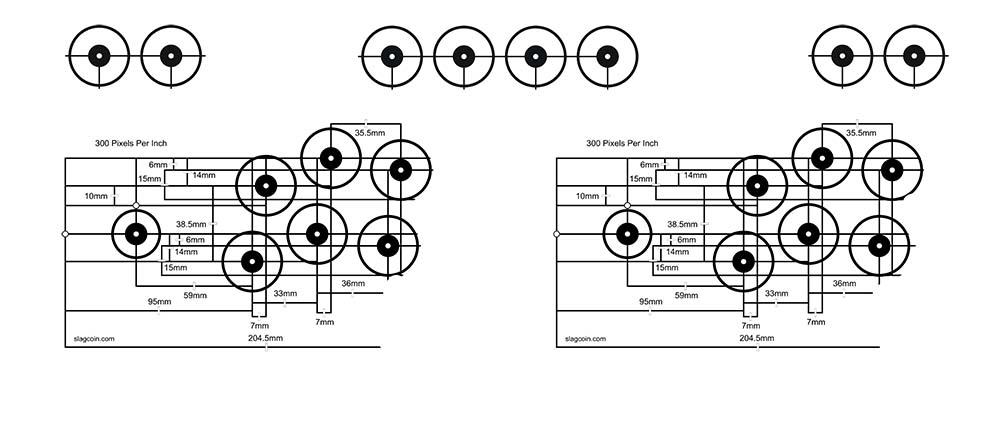This is where it started to look more like a bartop arcade, and where everything got a bit more exciting as I started to install all the parts!
First order of business was to cut a very precise hole, in a very exact position in the marquee area of the cabinet so the amplifier would sit in there seamlessly and be fully accessible to the users. I didn't actually take pictures of this hole as it evolved, but it was pretty horrid and nerve-wracking as I was cleverly digging out this hole in my now mostly built cabinet, so a screw up would have cost me big time.
I did a lot of measuring, and figured out the exact spot and the exact size - due to the face of the amplifier I used, I had no margin for error. Also the amp case was ridged so not a perfect fit to a precise edge (had I managed to cut one!), so I did the best I could with a drill and jigsaw, then sanded out gradually with my dremel until the amplifier just squeezed in. I also had to machine off part of the casing for the amp so it would fit through the hole to be flush with the outside of the marquee.
Hole cut and amp fitted, I filled the gaps around the edges with wood filler, sanded and painted before reassembling the amplifier guts in situ. I still have access to the amp and speakers should I need it via the rear access panel (lucky bit of 'planning'). The speaker grill surrounds I painted red and left the grills silver. Gave a nice look.
Next I cut the button holes in the control panel. I wanted 20 in total, plus the joystick holes. I decided to replicate the button setup that Game Room Solutions does in its cabinets, for one it seemed a sensible setup, and for two they had a fully written tutorial on how to set up all those buttons in RetroPie. I was doing it slightly differently as I wanted all the buttons on the control panel, no admin buttons on the front panel, just for neatness and ease of assembly.
I found the button templates at SlagCoin, and played around with them in photoshop until the layout was even-ish (I did this at real life size), then printed out at real size on a couple of sheets of A4 paper (see below for example image and link to pdf file). I carefully taped the paper onto the control panel, making sure it was all square/in the right place, and the starting drilling out the holes with a 11/8" spade bit in my cordless drill. Sanded a bit, primed, sanded and then painted the panel. Jumped ahead and fitted the Zippyy joysticks as well at this point, just bolted them in using bolts nuts and locking washers I picked up at Home Depot.
Here's a jpg of the control panel layout:

Download the full-sized bartop control panel layout pdf file here. 3mb, .pdf - it has the orginal photoshop layers still editable if you want to move something around!
I was going to leave the panel just painted red, but I couldn't get the paint finish quite perfect and it was all starting to look a bit 'red' so I actually ended up wrapping the control panel in some nice 3D carbon fiber vinyl I picked up at the last minute from Canadian Tire. I have over half left, but I'm glad I wrapped the panel it was $20 well spent.
I now had the monitor fitted (I over-sized the VESA mount holes to give me some wiggle room if needed), the amplifier and speakers and grills. I wired the amp at this point just to test if it worked! Also powered on the monitor I bought for the first time. Luckily everything worked fine :)
At this point I had another test fitting, just to see if everything was going to squeeze in...but after painting, it seemed like everything grew a few mil so the control panel wouldn't fit in, nor would the partially made back access panel. A few minutes of sanding with some 80 grit paper and it was all good again!
Next step was to install the buttons, and figure out wiring them to the Xin-Mo usb controller, then hook everything up to my Pi 3!